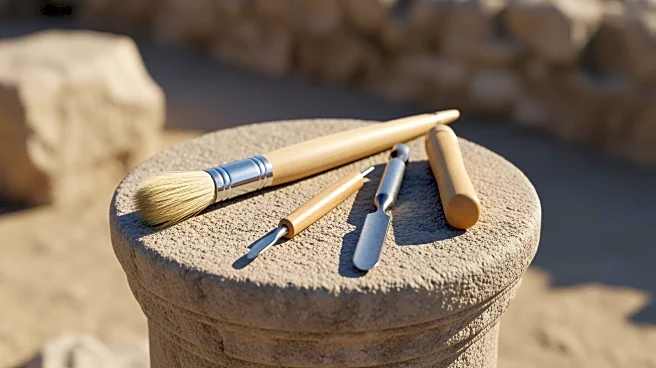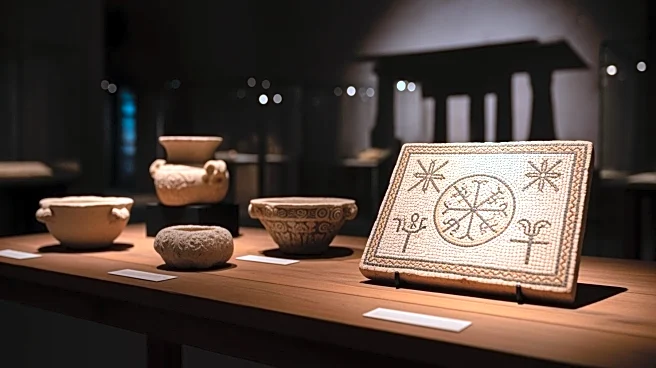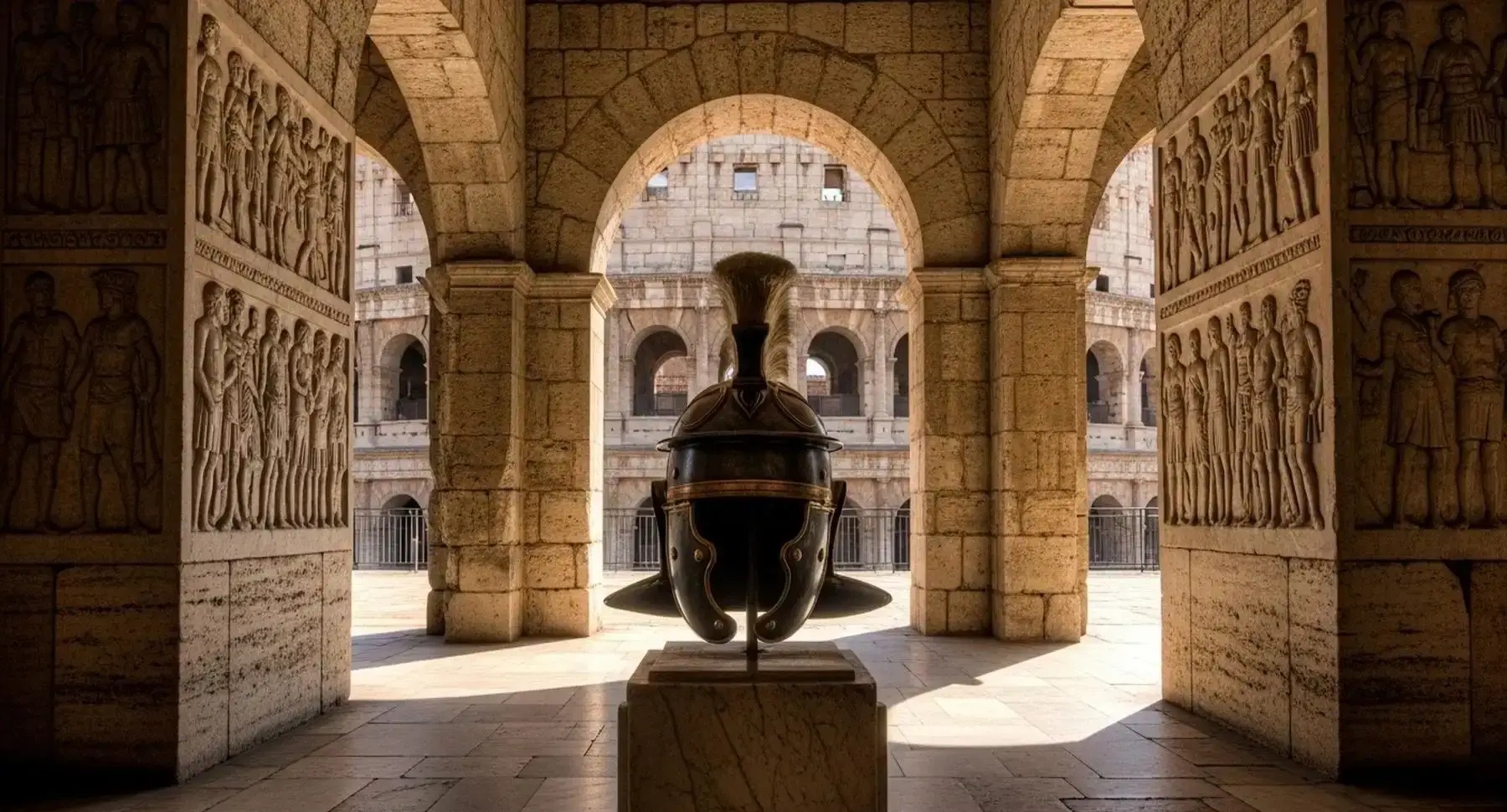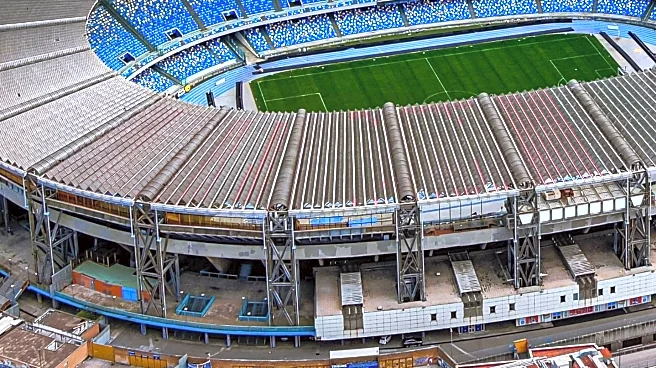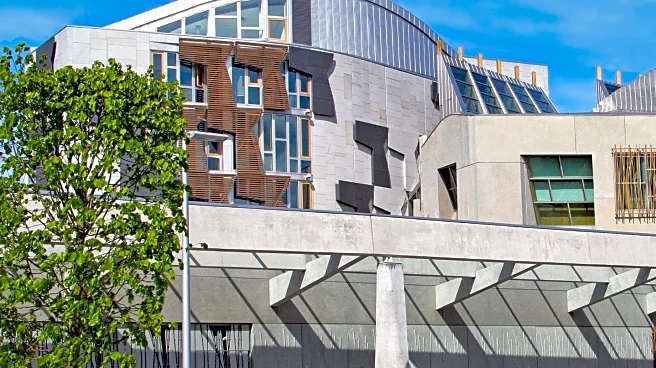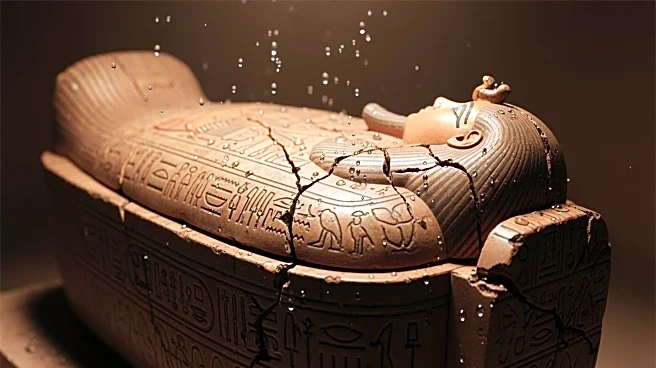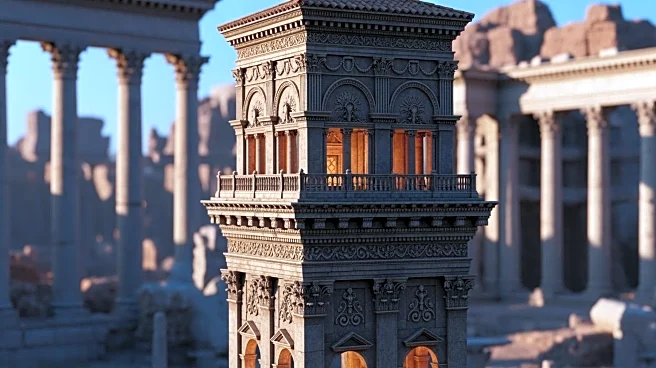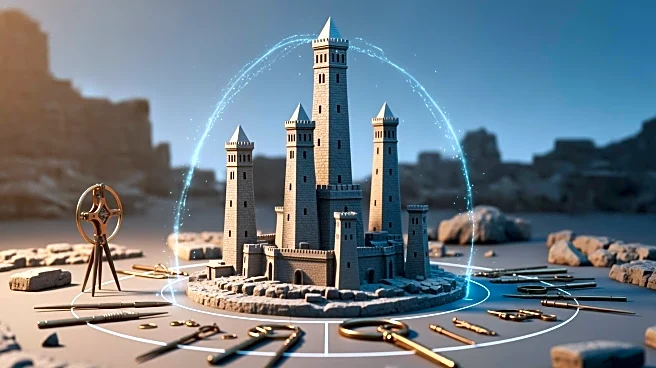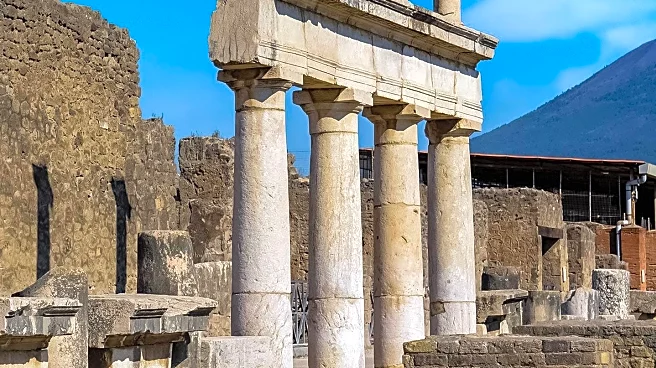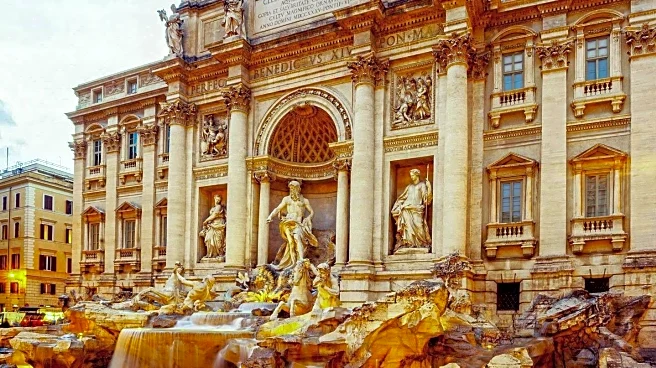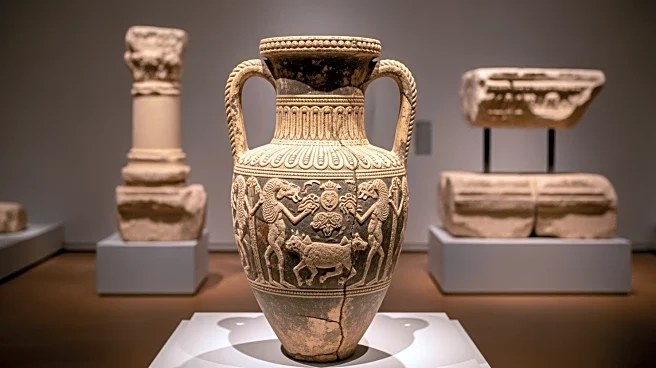What's Happening?
The Archaeological Park of Pompeii is preparing to excavate the remaining portion of the Villa of the Mysteries, a site known for its well-preserved Ancient Roman frescoes. The villa, dating back to the second
century BC, has been largely excavated, but around 10% remains buried due to a private farmhouse that was recently acquired and demolished. The park is conducting a funding drive to raise €1.4 million to finance the excavation, with plans to start in early 2026 if successful. The excavation aims to uncover the servants' quarters, potentially revealing new frescoes and providing insights into the lives of Pompeii's laborers.
Why It's Important?
The excavation of the Villa of the Mysteries is significant for understanding Ancient Roman art and culture. The potential discovery of new frescoes could offer valuable insights into the artistic and social dynamics of Pompeii's elite and laborers. The project highlights the importance of preserving and studying historical sites to gain a comprehensive understanding of past societies. The funding drive reflects the challenges faced by archaeological projects in securing resources, emphasizing the need for public and private support in preserving cultural heritage.
What's Next?
If the funding drive is successful, the excavation is expected to begin in early 2026. The project will focus on uncovering the servants' quarters, which may provide new information about the daily lives of Pompeii's laborers. The park aims to balance the study of elite culture with insights into ordinary life, contributing to a broader understanding of Ancient Roman society. The ongoing excavation will be conducted while parts of the villa remain open to visitors, ensuring continued public engagement with the site.
Beyond the Headlines
The excavation of the Villa of the Mysteries raises questions about the biases in classical archaeology, which often prioritize elite culture over the lives of ordinary people. The project aims to address these biases by focusing on the broader context of the villa's famous frescoes. The initiative reflects a growing trend in archaeology to explore the social and economic aspects of historical sites, contributing to a more inclusive understanding of past societies.
